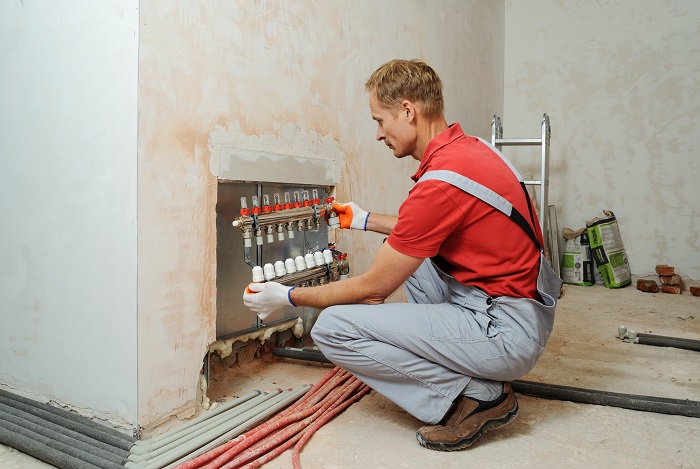Hydronic heating has been a popular choice among the people since decades. This process of heating is pretty simple; Hydronic heating is a kind of heating process that gets operated with warm water in a boiler. The warm water is then passed through special pipes that are pressurized. The water then reaches the under floor coils or radiator panels, which are installed strategically throughout the home. These panels, piles, and coils then radiate the heat out into the entire room. The water, after cooling, returns to the boiler where it is again heated.
Owing to the simplicity of the technique, the hydronic heating system is gaining a great deal of popularity among the people, especially in the European countries. These sealed systems can also be used for heating floor slabs, towel rails, swimming pools, and many more.
Installation of Hydronic Heating Systems

There are different ways in which hydronic heating systems can be installed at home. Even if you are building a new home, or you have remodeled your house, hydronic heating systems can be easily installed in almost all the situations.
Here are some of the common ways in which hydronic heating systems can be installed:
- Radiant Flooring: This can be done in two ways- dry installation and wet installation. Let’s have a look at both the techniques to have a better understanding:
- Wet Installation: The technique of wet installation means placing the radiant heating tubes into concrete beds. This is very effective as the concrete helps to protect the tubing and also provides thermal mass so that the heat is absorbed and radiated with the same and even warmth throughout the room.
- Dry Installation: This technique is also known as a plate system. In this process of installation, the prebuilt panels with tracks are used so that the radiant tubing can be installed within their design. In this manner, it becomes very easy for the installers to loop the tubes before they are covered with the flooring material. If the entire system doesn’t have thermal insulation, the dry installation has to be done more carefully.
- Radiators and Hydronic Baseboard Heaters: These are much easier to install as the system incorporates the use of much lesser piping as compared to the traditional former techniques. Different zones of pipes are carefully placed inside the walls and their units are kept connected. One should place the baseboard unit or the radiator very carefully, or it might get blocked with furniture in the near future. Apart from that, the plumbing lines should be well-insulated. This will make sure that little heat is lost while the water moves to the heating units and a larger part of the heat is easily recovered when the water returns to the boiler.
The Benefits of Hydronic Heating
Although hydronic heating is gaining popularity over time, a lot of people are still unaware of the benefits that are associated with hydronic heating. Read on to find out:
- Comfort: Hydronic heating system is way more comfortable as compared to the traditional heating system. It helps to balance the level of humidity and can be installed in different zones. Once you install this system in your house, you can get rid of the terror of having to step on the cold floor, for good!
- Healthy: Unlike the traditional heating systems, hydronic heating systems do not push the air across the house or stir up the allergens, which can cause discomfort. Hydronic heating helps to provide a healthier environment for the entire family.
- Efficient: Hydronic heating systems are also very efficient. They can heat up a house in absolutely no time!
Conclusion
Convincing enough? Once you install this system in your house, you will explore more of its benefits and will be amazed to know how advanced and effective the technology it is loaded with.


